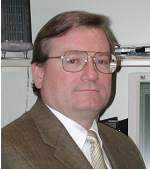
has been providing software and consulting for process and materials modeling for over 30 years.


|
has been providing software and consulting for process and materials modeling for over 30 years. |

|
At Process Evolution, we have a history of teaming up with colleagues to gather and use experimental information to establish the physics-based models that allow predictive modeling capabilities. This is our purpose and fulfills our mission:
Purpose: Improve process and materials understanding
Mission: Provide process modeling and materials modeling software and consulting
Vision: A world in which everyone understands materials and processing (JIC: humor intended)
Many people contributed to demonstrating the software currently used at Process Evolution. These include students and post-docs at Arizona State University and Rensselaer Polytechnic Institute, as part of their research efforts. It also includes colleagues in industry and laboratories, who helped to define interesting problems on which to work.
Many of the results presented on this site were generated by students, post-docs, and or colleagues
for presentations at conferences and/or for publications. We at Process Evolution are pleased to have
supplied the software for these demonstrations and acknowledge the benefits of these demonstrations to
the development of our software products. Our software is better for their feedback and guidance.
We have impacted IC fabrication and materials modeling in general mostly through joint projects, and we think that is the path to having continuing impact.
We continue to support microelectronics (IC) processing, where we have 25 years of experience; particularly in advanced interconnect processing and integration issues (BEOL), as well as 3D integration (3D-ICs). We have done considerable equipment scale modeling in addition to multi-scale modeling, from the feature scale to the equipment scale; however, we are best known for our work at the device or feature scale, which is often called topography simulation.
In addition to process simulation, our thermo-mechanical modeling of interconnects and 3D-ICs led us to develop software for microstructure formation and evolution simulations; and more generally for the evolution of multiple interacting 3D objects.
We have simulated process steps used in photvoltaic (PV) device fabrication, with a focus on connecting the results of our process simulations to software that predicts performance (performed by other team members), by passing along finite element meshes.
In addition to specific projects, we have made significant contributions to the approaches taken to model and understand processes; notably:
1. Low pressure transport and reaction systems such as many deposition and etch processes used in microelectronics and related industries.
2. Multiple, interacting, 3D bodies evolving under chemical, physical and/or mechanical stimuli.
3. Though outside of PE per se, Dr. Cale worked with colleagues at ASU and Motorola to develop and demonstrate the first integrated multiscale model of CVD, from the submicron feature scale to the equipment scale.
In addition to joint projects in which our codes support experimental efforts, we are interested in joint tool development. For example, we have introduced parallel code into parts of EVOLVE, and would like to work with others to incorporate more parallelism; particularly as part of Adaptive Mesh Refinement.
We are also excited about potential new projects in 3D printing.
This site is organized as follows (please note that it is always in transition!):
The list of links at the bottom of each page provides access to information at process-evolution.com:
A home page to hi-lite new results and to provide an overview.
A page that contains contact information.
This page, intended to explain more about PE.
A page for EVOLVE AMR provides info about our adaptive mesh refinement work.
A page for EVOLVE MM provides more info about evolving multiple material interfaces.
A page for EVOLVE 3D, which is a physics-based 3D topography simulation tool.
More "legacy-like" results, which are still very interesting to PE, can be accessed through links to EVOLVE, PLENTE, 3D-ICs.
"EVOLVE" summarizes the last version of EVOLVE. EVOLVE was the first code to implement our "Ballistic Transport and Reaction Model" for low pressure transport and reaction. By including chemical kinetics and different source models (transport/flux) for reactants, EVOLVE set a standard for IC fabrication process models.
"PLENTE" summarizes code that was largely developed by Max Bloomfield and David Richards, but with the assistance of several other students and post-docs. PLENTE was driven by the need to look at grain structure and its evolution as (IC) interconnects shrank in size, and so it focuses on the evolution of multiple "materials" (interfaces). It uses multiple level sets on finite element meshes.
"3D-ICs" summarizes a study we did to determine whether there are potential reliability issues in 3D_ICs due to the differing coefficients of thermal expansion of the relevant materials. We concluded that there are potential issues, and introduced grain based modeling to improve modeling results.

PE Home
About PE
Contact PE
EVOLVE AMR
EVOLVE MM
EVOLVE 3D
EVOLVE
3D-ICs
PLENTE